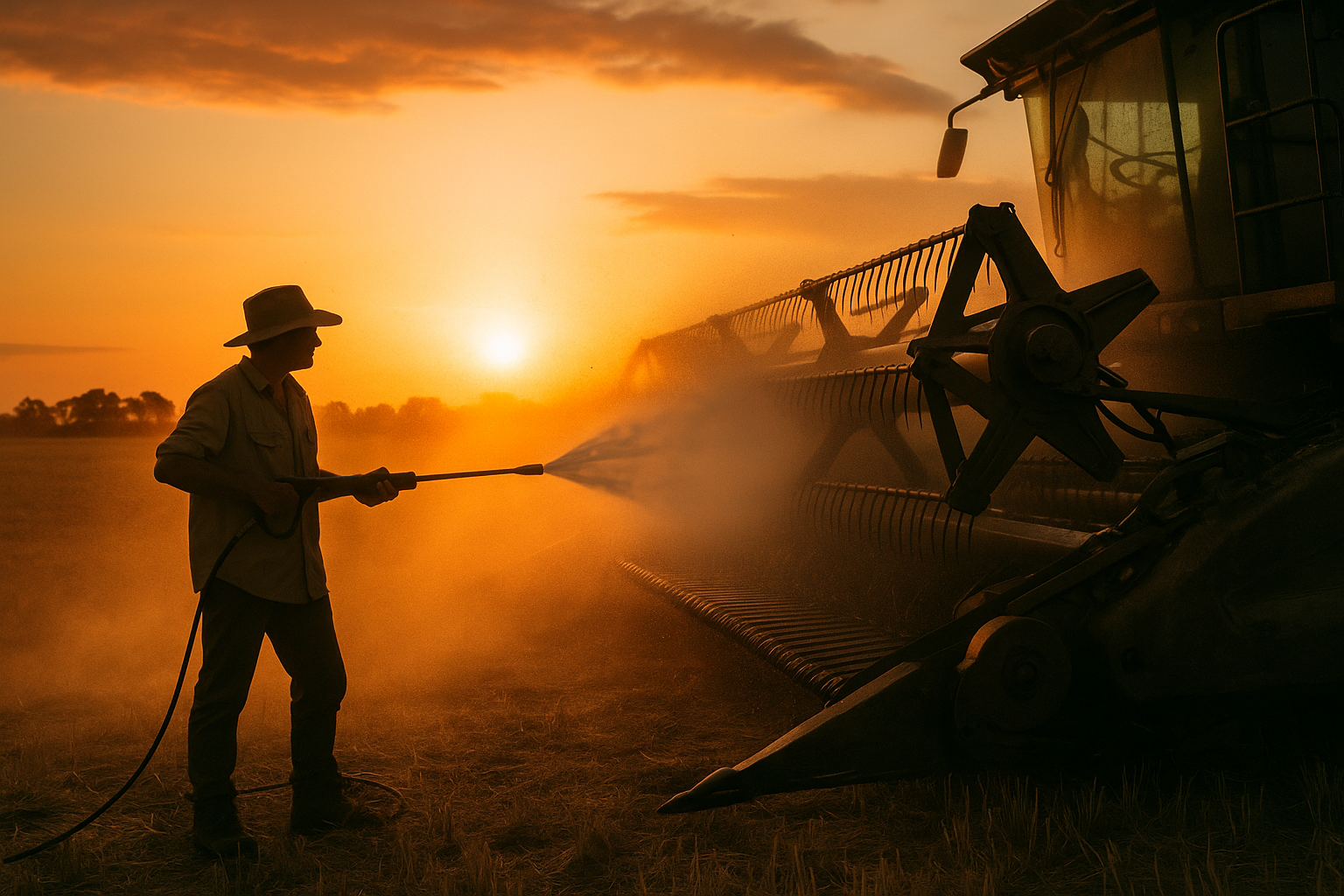
By Adam Jalaludin, Grains Biosecurity Officer, Biosecurity Queensland
As winter crop harvest ramps up across Australia, growers and contractors naturally focus on filling storage facilities with valuable grain. What happens after that is just as important. The post-harvest period offers a vital opportunity to prevent pest outbreaks, protect grain quality, and maintain biosecurity.
Good post-harvest grain hygiene does more than protect what you’ve just harvested. It helps minimise pest pressure and reduce the risk of resistance, quality loss, and exotic pest establishment for the rest of the year.
Why hygiene matters now more than ever
Australia’s grain industry operates in a global marketplace where our reputation for clean, pest-free grain underpins trade. But this reputation is not guaranteed and should never be taken for granted.
Detections of khapra beetle on incoming sea cargo reminds us how close this devastating exotic pest is to our doorstep. As one of the world’s most damaging stored grain pests, khapra beetle could trigger export restrictions and stringent interstate regulations if it is established here. It is estimated that khapra beetle could cost the Australian grains industry more than $15 billion over 20 years.
Although Australia is still free of khapra, on-farm hygiene practices are vital to prevent an incursion from turning into an outbreak. Dirty storages, old grain residues and untreated pests can provide the perfect breeding grounds for established pests like the lesser grain borer, and for any exotic pests that might slip through our national borders.
The post-harvest window: a strategic opportunity
Immediately after harvest is the best time to thoroughly clean storages, augers, harvesters, grain vacs, and handling areas. Once grain has been moved or sold, use the opportunity to:
This is especially important in northern regions, where higher temperatures mean pests such as the lesser grain borer and rust-red flour beetle breed year-round. In southern regions, winter dormancy in pests can lull growers into complacency, but leftover grain dust and residues can fuel a rapid reinfestation once spring arrives.
Hygiene and resistance management go hand in hand
With limited fumigation options, especially phosphine, the industry faces a serious resistance threat. Between 2011 to 2021, phosphine resistance has increased more than five-fold. Poor hygiene is a key contributor: high pest populations mean treatments may be under-dosed or poorly distributed, encouraging resistant survivors.
Cleaning storages and equipment reduces pest pressure and improves the effectiveness of applied pest controls, such as diatomaceous earth, thereby extending the useful life of our limited fumigation tools.

Grain biosecurity starts at home
Biosecurity is often associated with border controls and government inspections, but everyone plays a part. Growers contribute by:
Clean storage environments also reduce the risk of exotic pests establishing undetected. Many pests, including khapra beetle, thrive in dark, dusty corners of storages, areas rarely inspected or cleaned. Good hygiene removes these hiding spots.
Staying alert through summer
In Queensland and parts of northern New South Wales, harvest often overlaps with the planting of summer crops such as sorghum or maize. These crops can host additional biosecurity threats, including fall armyworm and sugarcane aphid.
Fallow paddocks and volunteers that emerge after harvest can harbour pests and diseases. By incorporating weed control and residue management into post-harvest hygiene, you strengthen on-farm biosecurity and better prepare paddocks for the next season.
An investment in future seasons
Growers already do a lot of heavy lifting by cleaning machinery, managing fumigations, and adopting new grain monitoring technologies. Consistent proactive hygiene across seasons and between storages is key to avoiding nasty surprises later.
Post-harvest hygiene may not be glamorous, but it is effective. Taking time now to clean, inspect and prepare will pay dividends: it reduces pest numbers, avoids contamination, preserves chemical efficacy, and protects market access.
In biosecurity, the absence of a problem usually reflects deliberate, preventative effort. The work you do in the quieter months of the cropping season or immediately after harvest, may be what keeps the system running clean and pest-free when pressure returns.
For more information and helpful grain resources, visit the GFBP website and the Stored Grain Information Hub or contact your local grains biosecurity officer.
Launched in 2007, the Grains Farm Biosecurity Program (GFBP) is managed by Plant Health Australia (PHA) and funded by growers through Grain Producers Australia (GPA). The GFBP is an initiative to improve the management of, and preparedness for, biosecurity risks in the grains industry at the farm and industry levels.